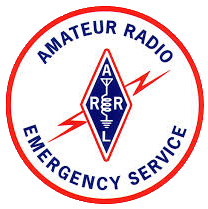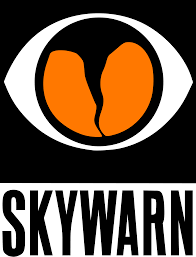Handheld Radios As Go-Kit
- Details
The most basic “go-kit” item in the Amateur Radio Operator's bag of tricks is the Handheld Transceiver (HT). No, HT doesn't stand for handy-talky. While most of us own several HTs, and they are useful tools, especially when near repeaters, we also know that the HT, out of the box, makes for a pretty poor emergency station. The rubber-ducky antenna and lower voltage batteries often supplied with the radios, along with the lower power output HTs have are challenges to be overcome.
Let's take a look at some things that can improve HT performance:
- Purchase a higher gain antenna for the HT. The original manufacturers equipment (OEM) antenna that came with your HT is little more than a dummy load. Many aftermarket antenna manufacturers make replacement antennas for just about every HT. Talk to others with the same HT as yours and find out what they are using. A step up from that is a mobile antenna or even a base station antenna on a push-up pole. Antenna gain and height are the keys to overcoming marginal operations.
Power Connectors
- Details
One of the interesting things about Amateur Radio is the nearly universal use of PL-259 connectors for base and mobile radio gear, at least that at or below the UHF end of the frequency spectrum. We typically utilize 50ohm cable, even if there are variations of loss across the frequency spectrum, diameter, etc.
One area we see very little standardization, especially across brands, is power connections. Almost all mobile and base gear runs off 12 volts, yet there are a multitude of connectors, having little more than the red for hot and black for ground color coding.
In addition, we will connect that equipment to a variety of sources, some making it obvious which connector is hot and which connector is ground. Others, like car batteries, often require a close look. Also, in some instances the wires are always properly color coded.
Because of these variables we can almost be certain, that if we tinker, change, or rearrange our radio gear very much, we WILL accidentally hook the wires up wrong and let the smoke out of some valuable piece of radio gear.
Anderson Powerpole Connectors
- Details
Setting up ad-hoc operating locations can be a challenge, especially when a variety of different radios and peripherals are going to be utilized. Seldom are components interchangeable between brands, and often not even amongst radios from the same manufacturer. Microphone, antenna, and power connectors often vary. Seldom is there a reason to interchange microphones, and most all of us have the stash of adapters to convert antenna connections from PL-239 to N or SMA or BNC. But power connections can present more of an issue.
Different radio manufacturers use different power connectors. Power supplies, while newer ones have Anderson Powerpole (APP) connectors built in, often just have posts with thumbscrews, banana plugs, and a variety of others.

In the hustle of setting up radios, the greatest challenge, and potential hazard, is hooking up power.
Severe Weather Awareness Week
- Details
Various National Weather Service offices sponsor severe weather weeks, and the Peachtree City office usually hosts theirs during the first or second week of February.
Each day covers a different topic related to weather safety. As potential resources during severe weather as storm spotters, safety at home must always come first, and is a necessary prerequisite to being able to spot and participate in severe weather nets.
This year's topics are: Family Preparedness, Thunderstorm Safety, Tornado Safety, Lightning Safety, and Flood Safety.
Family Preparedness - More Information.
- Make A Plan - Ensuring the family is all on the same page regarding where to go and what to do in different circumstances.
- Build A Kit - Have items you'll need during an emergency, such as flash lights, first-aid kits, water, food, games to entertain the kids, etc.
- Be Informed - Have at least one weather radio handy, and an amateur radio as well.
Thunderstorm Safety - More Information.
Net And Repeater Practices
- Details
This material was inspired by "Seven Tips For Better Repeater Operating" published in ARRL's "On The Air" magazine. I've consolidated some of theirs, left some off, and added some of my own.
In previous presentations I've discussed how we often become complacent, or sloppy, in maintaining or testing our equipment for proper operation. Without maintenance and testing we often discover "sudden" problems with our equipment that really had been creeping up on us over time; usually poor antenna connections, dirty power connectors, etc.
Likewise, over time we can develop some poor habits when operating over a repeater, or as a participant in a net, forgetting (or maybe never learning) good repeater courtesy and operation. Here are a few things to keep in mind when participating in a net or "rag chewing" on the drive to the grocery store. We've all been guilty of some of these at some point in time.
1) Pause after keying and before speaking. Believe it or not, the repeater does not begin retransmitting what your are saying the moment your thumb hits the transmit button on the microphone! It's true. Not only that, it doesn't start retransmitting at the moment you actually push the PTT (Push-To-Talk) button. It actually takes a little time for the repeater to recognize a signal is coming in, check for the tone signal, and then engage the transmitter.
Introduction to Winlink
- Details
Introduction To Winlink
Winlink is an global radio based email system (and more); used by amateur radio operators, government entities, NGOs, and mariners. Each of these groups utilizes radio bands appropriate to their licenses, but despite that, they can communicate with each other and any other email user, across these different environments and conventional internet.
WInlink consists of a network of UHF/VHF and HF stations that can send, receive, and relay email messages via radio and internet. HF and VHF stations are scattered all over the world, acting as gateways to Winlink email servers, allowing radio-based Winlink stations to send and receive email over this world-wide radio network.
Any ham radio operator can setup a Winlink client which will allow them to use a
Programs such as Winlink Express, Airmail, and pat (for Linux) can all be used to send email via radio or directly over the internet using the internet "telnet" protocol.
Summits & Parks On The Air and EMCOMM
- Details
I usually do a "Field Day & EMCOMM" presentation right around Field Day, highlighting how Field Day is good practice for deploying Amateur Radio in an emergency. But the recent West Georgia Amateur Radio Society presentation by WD8LQT about Summits on The Air brought to mind how much both Summits on The Air (SOTA) and Parks on The Air (POTA) also provide valuable EMCOMM experience for both those taking to the field and chasers at home in their shacks,
Both SOTA and POTA, like Field day test our ability to setup, troubleshoot, and operate radio equipment in a remote location in a short period of time. The short setup and operating windows, remote location, and the additional challenge in many cases of having to pack up gear for for use at the remote location is great practice for prepping for being deployed.
Both SOTA and POTA allow you participate as a field operator or at home. In the case of the person in the field, the location may be a relatively easy one accessible by car, or as challenging as a multi-day backpacking excursion. In the latter case, learning to pack up for an extended field trip would be very educational if you were to ever be field deployed to a disaster area. Remember, one of the tenets of EMCOMM deployment is to be as self-sufficient as practical, so as not to put further demands on resources in a disaster area.
Power Source Considerations
- Details
A recent round-table discussion on portable operation with limited power and its application in EMCOMM resulted in a question about solar power as a sole power source for Summit or Parks on the air operation. The question prompted a whole line of reasoning about not just alternative power, but the many factors involved in selecting and utilizing a variety of power sources.
Volts & Amps & Watts (Oh, my!)
The first thing to determine is the voltage and current demands you have to operate as planned, or the voltage and current limitations you face and must operate your equipment within. In an ideal situation you control the former, in some situations, such as EMCOMM, you may need to operate at the limits of the latter.
Since most amateur radio systems can operate off 12 volts (or something around 12 volts, usually ranging from 12-15V), you will normally be working with voltage in that range. If not, then you'll have to ensure voltage is somewhere within the range your equipment will handle. Handhelds, for instance, will often operate at lower power with as little as 7.2 volts input.
Automated Packet Reporting System (APRS)
- Details
APRS is packet-based digital tracking and communication system. It's best known for allowing operators to report their position or weather station data by internet or radio and be tracked using APRS clients and websites like aprs.fi, but APRS is useful for more than that. APRS also allows simple short messages between operators, sort of a radio-based text-messaging system. As a matter of fact, there is a text-message gateway available, allowing an operator to use their APRS setup to send text messages to cell phones and receive responses!
Since APRS allows for position reporting it has applications in search and rescue, damage assessment situations, and public service events like running and bike races. By embedding amateur radio operators into the field teams their progress can be monitored via APRS utilizing both online and offline mapping systems.
Although this makes APRS a potentially robust tool for public service, it's also useful for other activities, such as our summer balloon launches, where the balloon carries an APRS transmitter we then track to recover the balloon payload, which usually includes cameras and other electronics.
Page 1 of 7




